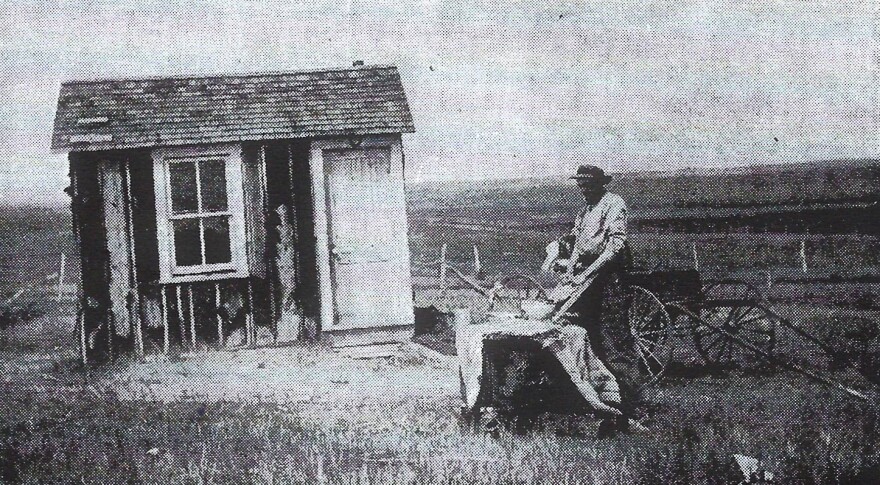Honestly, I don’t need to show you the old picture because you’ve already seen a dozen just like it. The mustached man looks uncomfortable in a suit and a vest and one of those little ties that barely peaks out of a collar that’s way too tight. He stares at the camera as if he’s forgotten how to smile. His wife—you may remember me talking about this couple—is half his age (or more). She stands beside him, her right hand on his shoulder.
You may remember the name—Bormanns. He married her when he was mid-thirties and she was mid-teens. Together, somehow, they had about a dozen kids, the last birth twins, when the old man was mid-fifties. I should pause here just to let all of that sink in.
Ernest Bormann, their son and the family storyteller, followed his own "call of the wild” out west to the land he'd secured under the Homestead Act, parched desert prairie at the edge of the Badlands. No close neighbors either, those naked Badlands menacingly over his shoulder.
Homestead land was yours if you could improve it, show that you were making the land prosper. Do that, and it was yours.
Ernest Bormann wanted to live out there for a year, "improving" things so the land, bad as it was, belonged to him. Then he’d sell it, just like that. If he could last a year out there, if he could show he was "provin' it up," that it was his. He considered just staying there his job.
Wasn't easy. Even the Native folks who were there long, long before Ernest had called the region "bad land." Once there may well have been roaming buffalo, but as far as I know, no doleful cowboy ever sat out beneath the open sky to sing the glories of the Badlands.
Ernest tried to break ground, but the stubborn soil didn't open worth a toot, no matter how much sweat and tears he invested. And he had to watch for rattlers. They were everywhere. He "worked out" a lot--cultivating for ranchers who lived miles away. He put up buildings, drilled wells where he could. It was 1912. On his claim, he was all by his lonesome; but hard work was nothing new for a man raised by his hardscrabble folks.
Ernest Bormann's homesteading experience was markedly different from his parents’. From day one, he never intended to stay or start a family. His hard work out at the edge of the Badlands was all about money; he'd get that land for nothing, and a year later flip it, make him some bucks and go on.
Ernest Bormann, a farm kid raised in poverty, became the quintessential American business mogul, although you could only call him "rich" in comparison with Ma and Pa. The land they "improved," became home for a family. The land he improved turned into rolled into bills.
The Lakota people had trouble understanding that view of the earth beneath their feet--that it was, well, real estate, something to sell to make money. If you think of the earth as the mother of all things, selling pieces of it seems not only vile but impossible. The assimilation white folks intended for Native people was, well, as evil as it was preposterous—to remove a Native soul and simply replace it with a white man’s.
Pioneers like Ernest’s mother, Ann Rubin Bormann, were marvels. That she did what she did for her family was immense and heroic. People like the Bormanns would find their stories buried beneath huge sections of open land worked by farm machinery too wide for paved roads. Who cares about all that anyway? Is there a high school anywhere near where students still read Giants in the Earth?
We’d rather tell Ernest Bormann’s story, a man who could turn a buck on a few lousy acres of bad land--homesteading entrepreneur. Son Ernest was doing the all-American thing, and you can't blame him because the man knew poverty and wanted no part of it.
Earnest made money. That's the story we like to tell.








